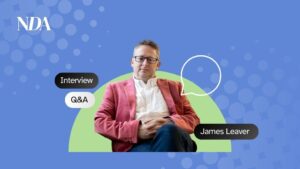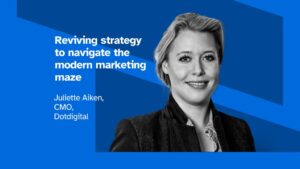Lumen and Ebiquity recently partnered on new research that reveals a surprisingly strong correlation between attentive seconds and incremental profit across media channels.
New Digital Age (NDA) spoke to Mike Follett, Global CEO of Lumen Research, about the study and what the findings mean for advertisers and media buyers…
Why did you produce this new research?
Lumen is an attention technology company. We collect lots and lots of permissioned data, and then build predictive models of attention. If you tell me you have an ad on a website, or on TV or an Out-of-Home ad, we can take that information and accurately estimate how much attention that ad is getting.
Advertisers, of course, don’t advertise for attention’s sake; they want to achieve their business goals. More often than not, they want to make more money and generate more profit. That’s the metric they are most interested in. They want to understand the relationship between attention and profit.
When we heard that Ebiquity had generated a set of pre-analyzed econometric models, 141 models across 14 different categories and 14 different advertisers, looking at the profit associated with different media channels, we knew there was an opportunity to collaborate. We already knew that attention leads to sales, but the Ebiquity models gave us a chance to conclusively prove a direct link between attention and profit.
How did the collaboration with Ebiquity work?
Ebiquity’s research showed that some media, such as cinema or TV, generate lots of profit, while other media, such as digital display or social media, are still worthwhile but generate less profit per 1000 ads. We took that data and matched it to how much attention ads in each of those media generated.
We assumed that there would be some sort of connection between attention and profitability, but we were genuinely surprised that the correlation was close to 100%. In actual fact, the correlation was .979, so 98% of the time. We carried out test after test and the results came back the same: there’s a really, really strong correlation between attention and profit. It turns out that eyeballs really do predict hands going into wallets.
What do the results mean for advertisers and media buyers?
The implications of this are really powerful. It shows that attention is the essence of advertising. Right at the heart of it, when we talk about advertising, we’re talking about attention.
So, if attention is a leading indicator of profit, your media buyers can use this information with some confidence that the ads generating a lot of attention are also going to be the ones that generate a lot of profit. All the best agencies are already using this sort of data within their planning tools.
We’ve shown the general relationship between attention and profit. The task now will be to add some detail to that and create attention plans that are specific to each brand and each campaign.
More attention is better, yes, but more attention is also usually more expensive. The second half of the research looks at the efficacy of attention once you factor in the costs of different media. Early findings suggest that channels such as TV and, to an extent, Social Media are generating attention more profitably than channels such as Cinema and Out of Home, but there’s an awful lot more for us to learn.












